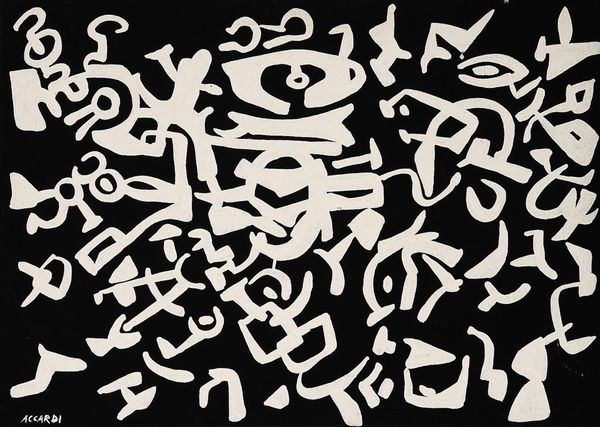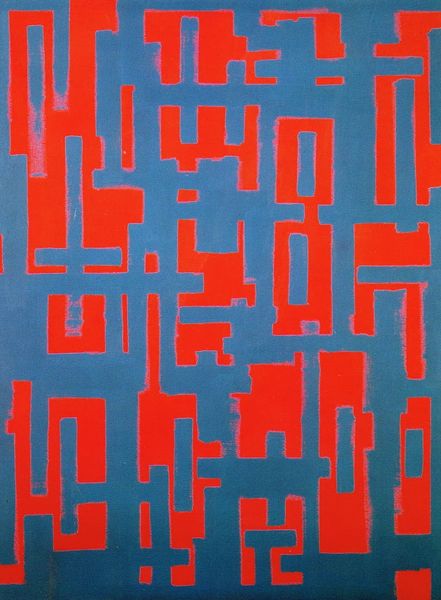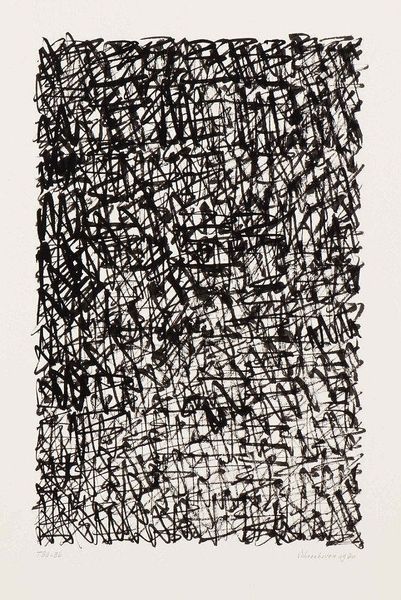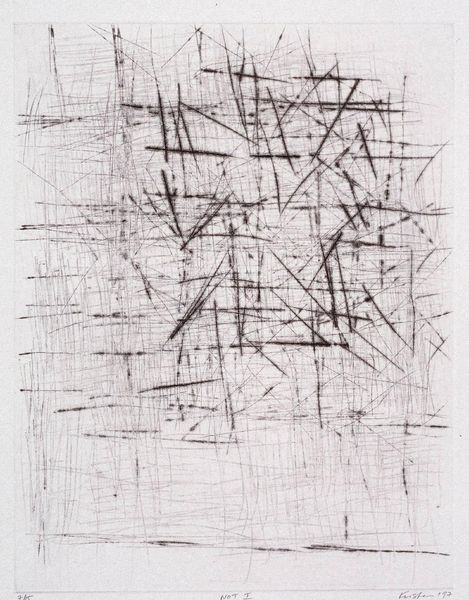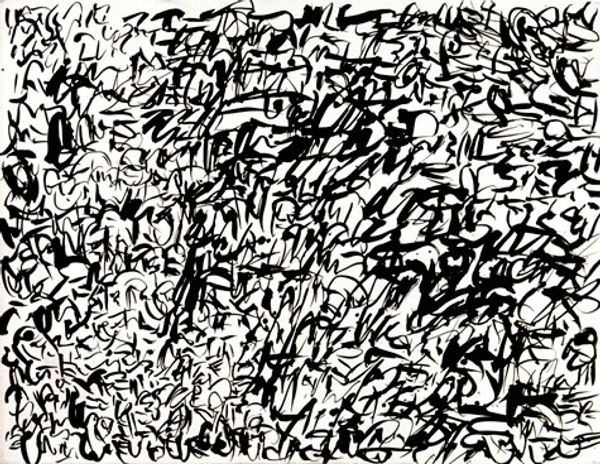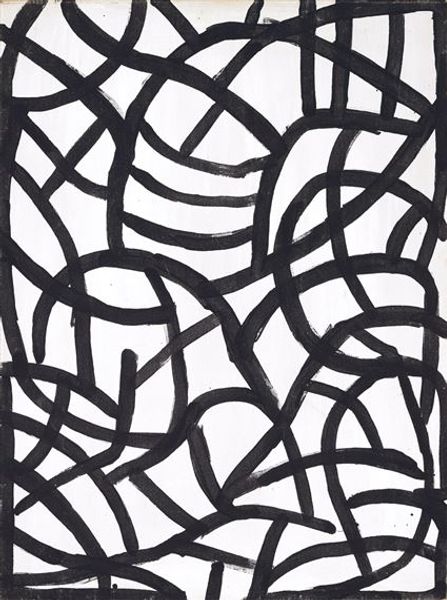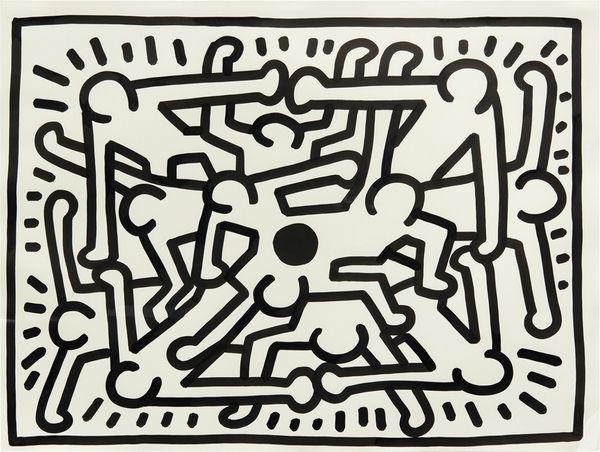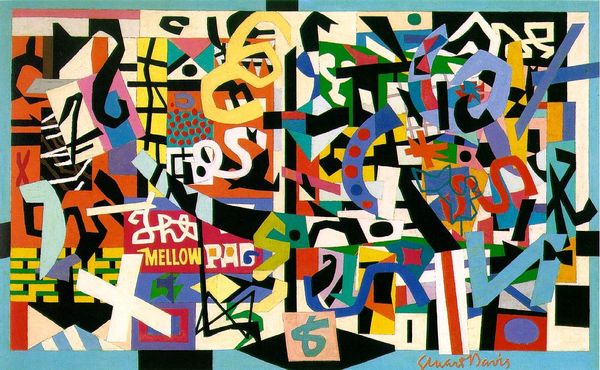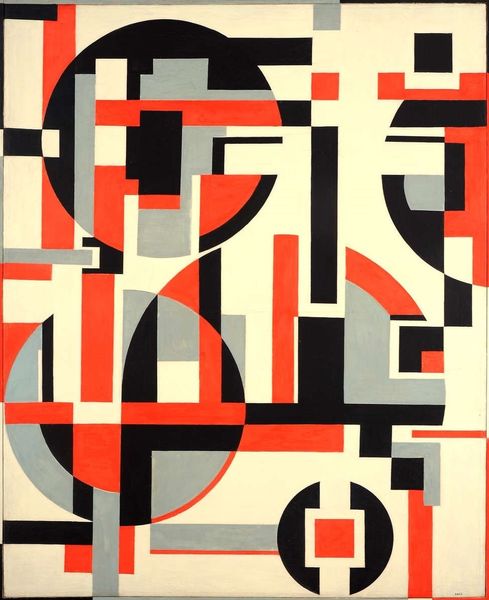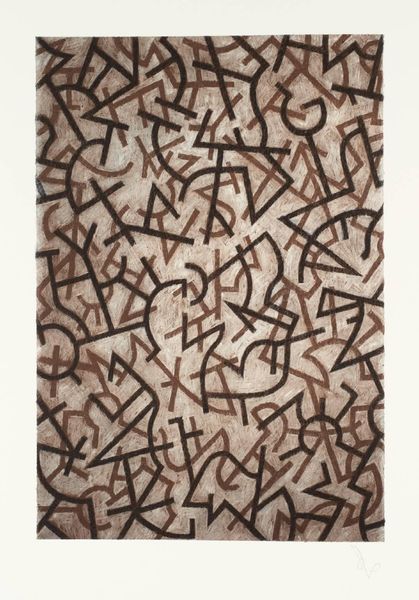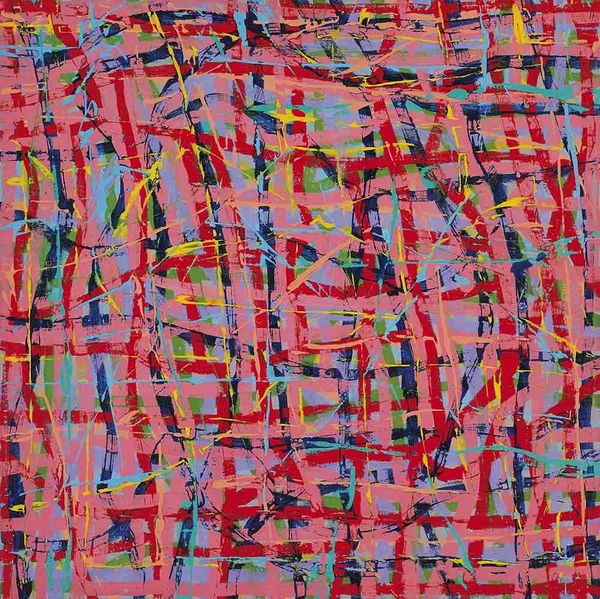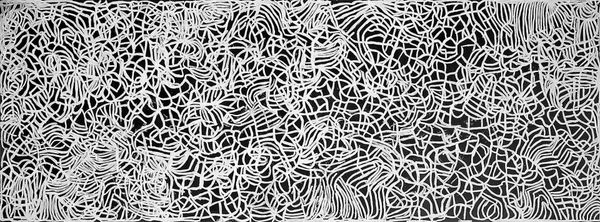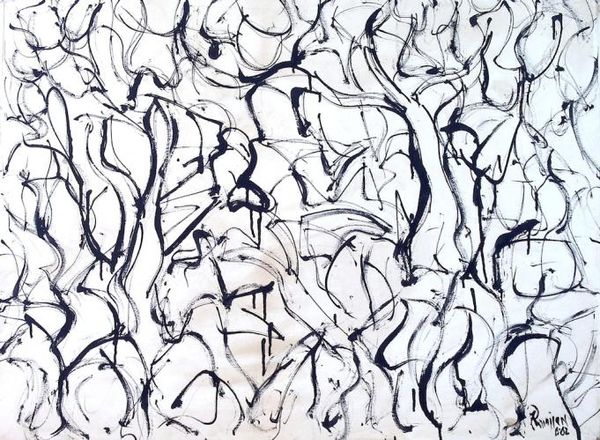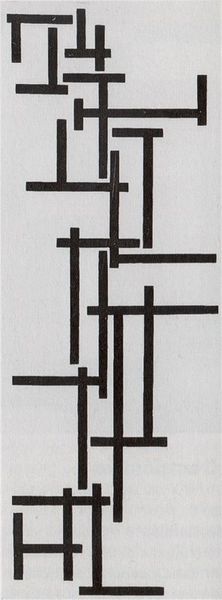
graphic-art, typography
#
graphic-art
#
pattern
#
typography
#
geometric
#
abstraction
#
modernism
Copyright: Ulfert Wilke,Fair Use
Curator: Right, here we have Ulfert Wilke's "California" from 1967, a captivating piece that combines graphic art and typography into a truly modernist abstraction. Editor: My initial thought? It’s like peering into a language being born, a primordial alphabet soup where meaning is just on the verge of coherence. Curator: Exactly! Wilke's work often plays with that very tension. He uses recognizable typographic elements—letters, symbols—but deconstructs them, obscuring legibility. Think of it as a visual representation of the information overload so characteristic of modern life. Editor: I see the "overload," certainly. There's almost a hieroglyphic feel, these bold black shapes against the white... It evokes a sense of ancient scripts wrestling with modernity, a kind of visual palimpsest. What are the repeating elements doing here? Curator: Ah, good eye! Repetition is key. See how certain forms recur? Wilke uses these repeating glyphs as a kind of visual rhythm. Think of it as a silent chant, a mantra made of shape and form rather than sound. This repetition adds depth. Editor: A mantra...I like that. It implies a deeper, hidden meaning we’re meant to intuit rather than decipher. Does this relate to the "California" title somehow? Is this supposed to symbolize the cultural landscape of California? Curator: I don’t know if it's that literal but perhaps that Californian mix of sunshine, innovation, and slightly unhinged creativity could easily find its pictorial double in such dynamic forms! Plus, in 1967, California was, culturally speaking, a hotbed. Think about that tension, chaos and beauty all mixed up. Wilke's composition captures it perfectly. Editor: It’s certainly a piece that invites endless interpretation. There’s a compelling ambiguity at play, allowing the viewer to project their own meaning onto it. I might say something different about it tomorrow. Curator: And I think that's its strength! It doesn’t preach or proclaim, it suggests and invites. "California" continues to resonate, doesn’t it? Editor: Absolutely. A piece you don't quite understand the whole story, but a world of untold stories and interpretations is definitely at play.
Comments
No comments
Be the first to comment and join the conversation on the ultimate creative platform.
